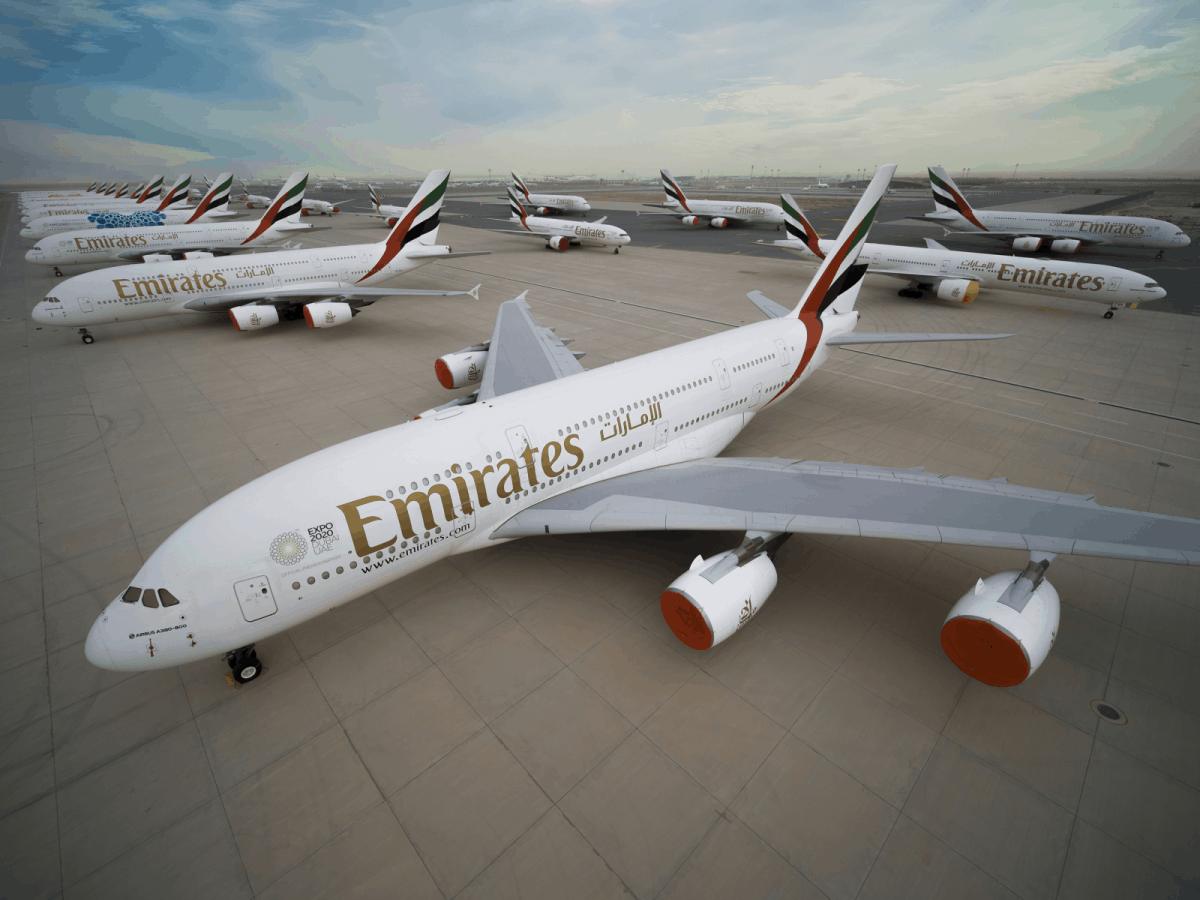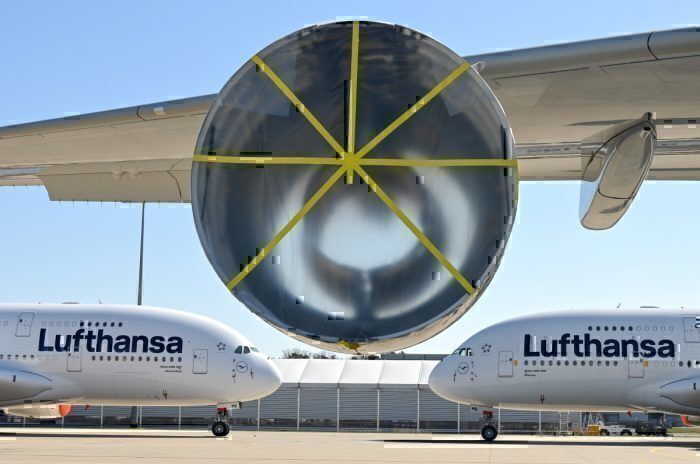With the United Arab Emirates holding fairly firm on its travel restrictions, much of Emirates airline's 269 aircraft are grounded. The Dubai-based airline says that it is "busy protecting and readying the world’s largest all wide-body fleet to take to the skies." Here is what the airline's massive engineering division is doing during this crisis to preserve its fleet of large jets.
“We don’t just cover our engines, but have a comprehensive aircraft parking and reactivation programme that strictly follows manufacturers’ guidelines and maintenance manuals, and we have enhanced standards and protocols of our own. -Ahmed Safa, Emirates’ Divisional Senior Vice President Engineering"
An enormous task
Taking care of the Emirates fleet, whether in the air or on the ground, is an enormous task. The airline has an exclusively wide-body fleet – 115 Airbus A380s and 155 Boeing 777s. Each aircraft, due to its sheer size, requires a team of 4-6 employees working a full 12-hour shift to store properly. This is in stark contrast to the 3-4 employees working for just eight hours to cover a narrowbody jet. "And taking extra precautions while maintaining social distancing adds its own interesting twist to the proceedings,” Safa adds.
While Emirates didn't provide any visuals other than the first image, Brussels Airlines put together a short video with a few scenes of storage-maintenance being performed on its narrowbody jets:
The airline says that it had initially parked and 'wrapped up' 218 of the 270 aircraft in its fleet, with 117 at Dubai World Central and 101 at Dubai International airport. This, in fact, required over 15,500 hours of labor.
However, as the demand for cargo rises and special repatriation flights are arranged, around 75 Emirates aircraft, both passenger and freighter, are operating. Emirates adds that some aircraft are undergoing scheduled heavy maintenance in Emirates Engineering’s hangars.
What does it mean to store an aircraft?
The airline lists a whole range of tasks that need to be done to properly and safely store an aircraft:
- Openings that are vulnerable to sand, dirt, water, birds, and insects, are wrapped up and made watertight. This includes engines and air data collectors, including pitot, static, temperature, angle of attack sensors, as well as engine intakes and exhausts, and APU intakes and exhausts.
- Aircraft interiors, including seats and inflight entertainment equipment, must also be covered, protected from the elements.
- Potable water systems and aircraft fuel tanks are preserved.
- Engine and APU systems are protected
- Greasing, cleaning, and preserving the landing gear and flight control systems.
- All cockpit switches are turned off. Batteries are disconnected, window blinds are lowered.
After this, routine checks are conducted at 7-, 15- and 30-day intervals across the fleet. This ranges from a simple walk-around inspection to a complex check that includes removing the covers and reactivating aircraft systems, idling engines and testing engine bleed air and flight control systems.
The airline ends by saying that it requires 4-5 dedicated employees at least 18-24 hours to put just one of its aircraft back into service.
Conclusion
It takes a lot of work to take care of aircraft that aren't transporting passengers or even moving. As infection rates in many countries start to level-off and even decline, hopefully, it won't be too long before some of these aircraft are flying once again.
Where will you be flying once travel restrictions lift? And on which airline? Let us know in the comments.


